“Watch out for Bikers” , “Loud Pipes Save Lives” , and other such “be safer riding” campaigns get a lot of attention from motorcyclists, but when you look at the science, they approach the problem from the wrong side.
Studies show the greatest improvements in motorcycle safety are gained through better riding skills and awareness.
I recently spent as much time as I could stand reading through studies on motorcycle accidents from the early 70’s through the mid 80’s – I found little data after that. The most notable of these is the Hurt Report, though there are also a couple big ones from Europe.
The results of these studies are consistent over time and irrespective of location with similar conclusions.
- The most common multiple vehicle accident is caused by a car turning left in front of a motorcycle at an intersection – about 2/3 of multiple vehicle accidents.
- The most common single vehicle motorcycle accident is running wide in a turn and leaving the road or sliding out – about 1/3 of single vehicle accidents.
- In about 40% of motorcycle accidents one of the contributing or cuasative factors is inexperience or lack of skills to evade or avoid the accident by the motorcyclist
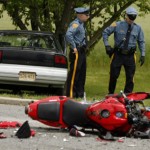 All of these are best addressed by the motorcycle rider through increased awareness and better skills.
All of these are best addressed by the motorcycle rider through increased awareness and better skills.
Those popular “Watch out for Bikers” and “Loud Pipes Save Lives” campaigns are not supported by the science. They may be popular, and it’s easy to put the blame and shift the responsibility to cage drivers, but it’s an ineffective approach.
Watch out for bikers? Size Matters;
The studies go in great detail examining how visible motorcycles are on the road; color, frontal area, bright clothing, lights on/off, etc. While each of these things does increase visibility and have an impact, overall it’s not significantly relevant. Bottom line is motorcycles are small compared to any other motor vehicle out on the road. You can do things to be more visible, but don’t count on it helping much.
Loud Pipes Save Lives? What’s that Noise?
We are primarily visual creatures. Biologically, we process and intake information visually. Auditory input is secondary. We listen to the radio or books on tape when driving because we know we process our driving information visually.
There are no scientific studies that examine whether loud pipes have any impact on driver awareness. The evidence is anecdotal or assumed – “I know my loud pipes kept that guy from moving into my lane”. Not if he didn’t see you. When it comes to the most dangerous situation for motorcycles, approaching an intersection, you can draw your own conclusions from a simple experiment. Next time your sitting at an intersection, note when you hear an approaching motorcycle. It’s long after you can see it. By the time the sound is loud enough to draw attention, it’s too late. Whatever is going to happen has already started.
Riding a motorcycle in traffic is like a mouse running through a heard of elephants. Be alert and ready to take quick evasive actions or you’ll be crushed.
- Always ride like you’re not seen. Expect the most common accident, that car pulling out in front of you. Intersections, side streets, and anything that obstructs the view tells you to get ready to react. Develop that second sense and practice spotting these hazards.
- Be Ready to React – ease off the throttle, get your hands ready to brake / clutch, get your feet off the highway pegs, down where you can get at the controls and position yourself to respond quickly.
- REACT – here’s where most failures occur and where better skills make significant statistical difference.
Once is not enough:
Typical motorcycle fail in the studies – car pulls in front of bike. Biker jams rear brake. Bike either skids upright into car or is “laid down” and slides uncontrolled along the ground. If you did take a Motorcycle Safety Course you have been exposed to how to brake and swerve – once. That was in a parking lot, at low speeds, with nothing to run in to, when you were totally focused on what you were doing. If that was the last time you practiced braking and avoidance, you are an accident waiting for an opportunity.
Motorcycle Safety – Getting it Right
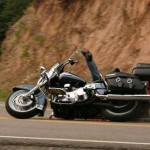 The science shows improving motorcycle riders skills are the most effective means of reducing accidents.
The science shows improving motorcycle riders skills are the most effective means of reducing accidents.
1) Up your skills with practice –
I can’t ever recall seeing anyone practicing motorcycle skills independently. One reason may be you find a secluded safe location to do it so it happens out of sight. I have my own “secret test track” not far from home where I go to hone my skills on a regular basis, but then I’m a motorcycle instructor and demand a high level of personal performance so I can demonstrate skills well for my students.
Honestly, without such a motivation I rarely practiced riding skills on my own previously in any serious manner. We all know we could be better with focused practice, but riding time is so precious, it’s tough to give up a fun ride for the rigors of working on skills and practicing technique. Let’s face it, it’s the rare motorcycle rider who ever does any independent practice.
2) Use the force – No Pain, No Gain –
At least swap one type of pain for another – a little financial pain can save you a whole lot of potential physical pain, as well as the attendant monetary consequences that result from even a minor accident. Since we’re unlikely to practice skills on our own, force yourself to do it. Pay for it and you’ll be motivated to give up the time and get your money’s worth.
3) Get ‘er Done
While there are plenty of things you can do to learn to be a safer rider, online sources, books, etc, or occasional practice on your own to improve skills, if you wan’t to get the quickest, best, and easiest results find professional structured instruction. You’ll accomplish more in less time, and progress more quickly to being a better safer rider.
Are you going to be safer next year?
It’s time to start thinking about those New Year resolutions. Becoming a safer rider is one to put on your list. Whether it’s repeating a basic course you’ve already had, or scheduling a track day to work on advanced skills, take action now and find an appropriate class for you. I know you want to ride more next year, don’t we all. Let’s all be safer riders as well.
Commit to taking motorcycle instruction to become a better and safer rider right now – scientifically sound advice.
_______________________________________________________________________________
– Wayne Busch lives in Waynesville, NC, where he produces the most detailed and comprehensive and up-to-date motorcycle pocket maps of the Blue Ridge and Smoky Mountains to help you get the most of your vacation experience. See them here – AmericaRidesMaps.com
Wayne is an advanced motorcycle instructor for Total Rider Tech teaching Lee Parks Total Control Advanced Rider Courses. It’s time you looked into advanced rider training to ride more confidently and safely, it will change your mountain riding experience. It worked so well for me I became an instructor! Total Rider Tech
_______________________________________________________________________________

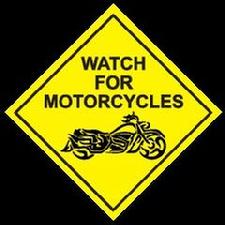
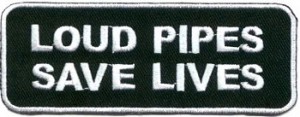
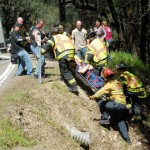

I agree with your article. It’s the rider responsiblity to be safe. Safety courses are beneficial.
I can control what I do on the roadways . . . I have no control over what you or anyone else does at any moment on the same roadway. Bright clothing, loud pipes, etc. might help but might just as well be the red cape draped in front of the bull. Keep cool and if you have a temper . . . take up water skiing, the falls are usually less damaging.
I find it so beneficial for me to take my bike from the storage area directly to the school parking lot and spend a couple hours with skill practice at the start of riding season before I head out to ride with my friends…it just makes sence!
Have practice parties and they will come.
We have weekly practice sessions here in N. Dallas and often get upwards of 35 people on motorcycles show up. We set out cones in slow-speed patterns that vary from very easy to very hard to master. We even hold braking practice sessions.
Everyone just wants to watch at first, then most venture out and try some of the easier pattens. Some get hooked and stick with it for years, getting better and better. Some have surpassed police qualifications exercises . . . on their own motorcycles. Everyone finds their comfort zone. Everyone leaves a little more skillful than when they arrived.
Ken, I’m in the Dallas area and I’d like to know more about your practice sessions. Please email me at: david.r.nichols@sbcglobal.net